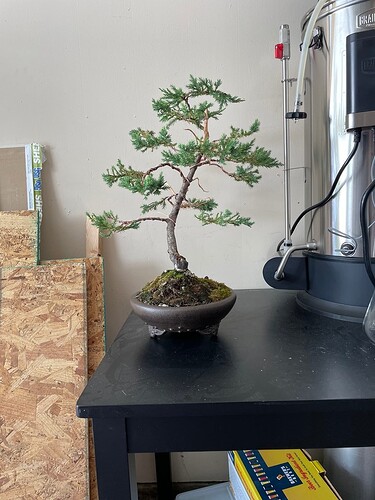I have two junipers I got as nursery stock a couple of years ago. I was wondering if they fell within the running or mounding varieties. The one in the first picture is a blue point which I’m pretty sure is variety of juniperus chinensis and the other is a grey owl which I’m pretty sure is a variety of juniperus Virginia
In the future I would love to elevate their aesthetics but I want to be sure I’m treating them correctly. Any advice would be great!
3 Likes
The Blue Point is a needle Juniper and should be treated as such, and yes the Grey Owl is a variety of Virginia
2 Likes
Thanks for the feedback! And do you know if virginiana is a mounding or running juniper?
1 Like
My experience with Juniperus virginiana is that they run with extensions on the vigorous branches and apex. They will mound and make decent pads with correct pruning after they have hardened in the early summer.
Running Junipers
When we talk about running junipers, what we mean is that the juniper will extend before it mounds. It sends out whips and then you will see it grow interior growth and mound.
Some species of running junipers are listed below.
Rocky Mountain Juniper
Sierra Juniper
California Juniper
Western Juniper
Mounding Junipers
Mounding junipers will grow nice dense puffs of growth before it sends out extensions. Below is a list of a few of the mounding junipers that we use in bonsai.
Shimpaku Junipers
Kishu
Itoiagawa
Toyama
Procumbans Juniper
Needle Juniper
6 Likes
Thanks for the detailed reply! Super helpful and exactly what I was looking for. I’ve seen how both types are treated in the library but I haven’t seen these varieties talked about I wanted to be sure I was treating them correctly for their growth habits.
1 Like
Excellently put Bob. I shall use you explanation next time I’m asked.
1 Like
Where does juniperous chinensus “daubs frosted” fit running or mounding? I think its a running juniper but im not sure.
it looks like its a running
I would also say that Juniper Virginia is an outlier and is apically dominant. In the northeast US the common name is Eastern Red Cedar as they are mostly formal informal upright in shape

